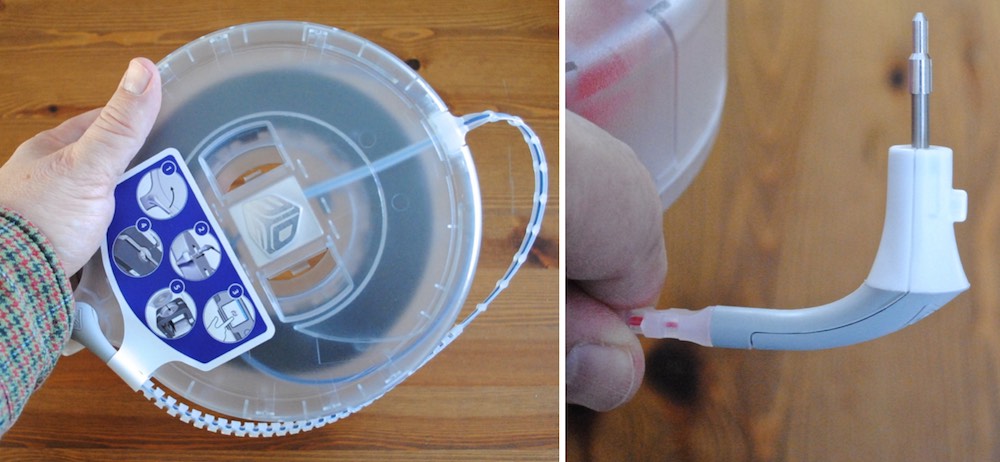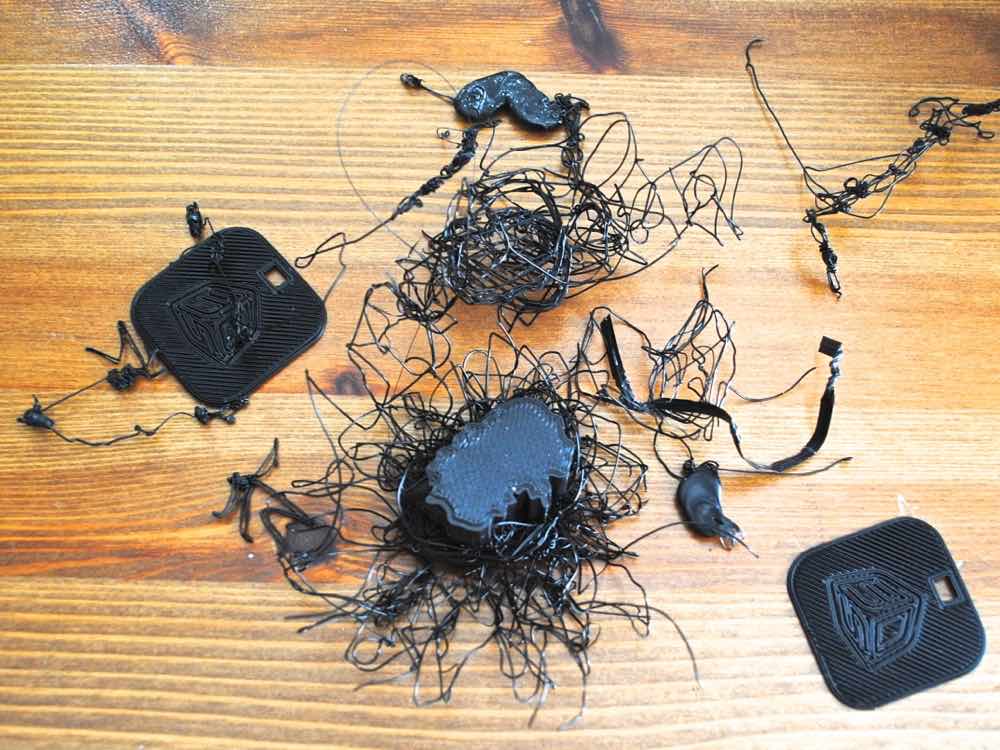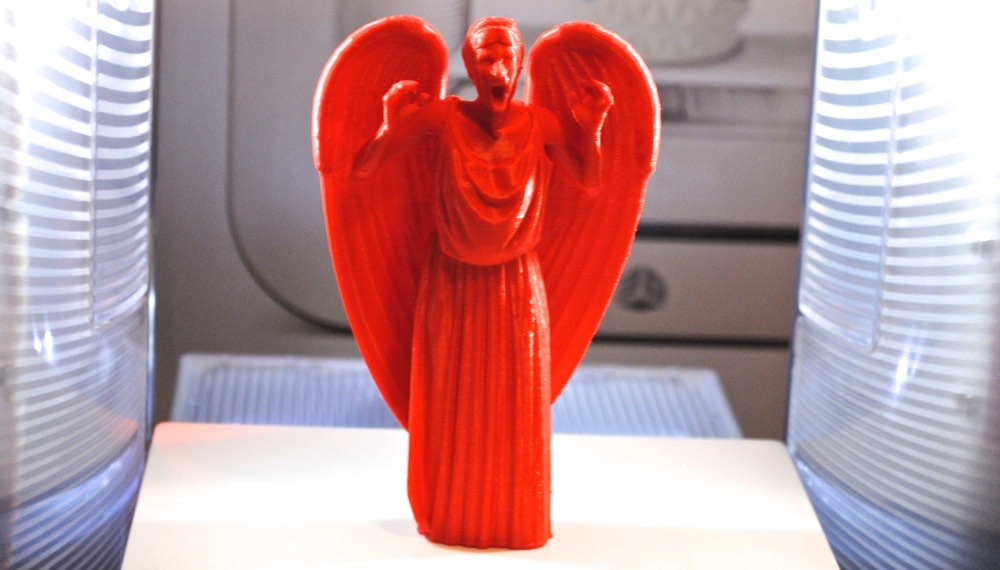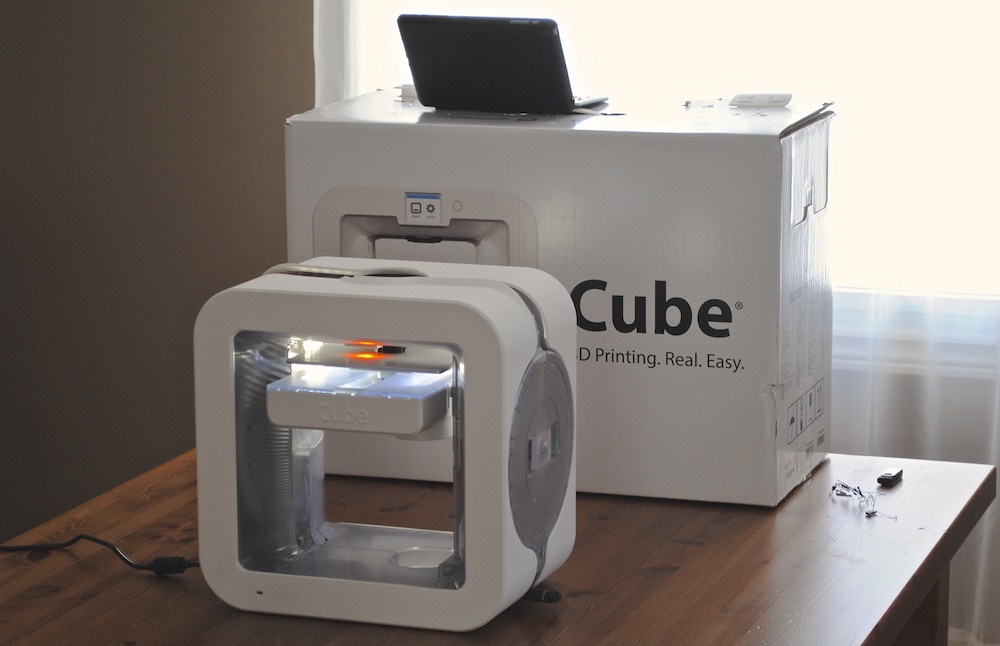
When was the last time you got excited about a new printer? Colour laser printers, multi-function printers that also scan and fax, high quality inkjet photo printers and wireless connectivity are pretty much taken for granted these days. 3D printing is another story. This cool technology lets you print physical objects. 3D printers have been improving rapidly, moving from industrial and hobbyist status toward mainstream. Each generation gets more capable, more compact and more affordable. The third generation Cube 3D printer (from 3D Systems) will be arriving soon at Best Buy and I got to spend a few weeks putting a review unit through its paces.
|
Cube 3D Printer Specifications
|
A Quick Primer on 3D Printing
Traditional printers print in two dimensions, using ink or toner to lay down an image on a piece of paper. A 3D printer heats plastic filament to deposit very fine layers on a platform to “print” a three dimensional model. This means the print head and/or printing platform on a 3D printer has to move not just back and forth and side-to-side, but also up and down. The 70 micron layer thickness the Cube 3D printer is capable of equates to 0.07 mm, or less than the thickness of an average human hair, so output gets pretty detailed. Just as you need a file—such as a document or image—to print on a laser printer, a 3D printer also needs a file to work from. The format of these 3D model files is usually in STL or OBJ format. Finally, because three dimensional objects are much more complex to print, 3D printers require considerably longer to complete a print job than your desktop printer does.
Unboxing and Setup
The Cube 3D comes in a fairly large box, but everything’s packed nicely and it’s easy to get all the components out. Besides the printer, you get two print cartridges, glue (you need the glue to keep models from shifting around during printing), plyers and adjustment tools and a thumb drive with some sample model files. The glue bottle arrived with the top popped off and a blob of hardened glue and cardboard clogging the nozzle. The exact same thing happened a few years ago when I tested the first generation Cube 3D printer (note to 3D Systems: use a screw-on cap, please).
Setting up has several stages.
On the software side, you need to download and install the free Cube software, or the Cubify mobile app. You need this software in order to convert 3D files you download into the .cube 3 file format used by the printer.
On the hardware side, plug in the printer and attach the print cartridges. These hook up to the print head using a system that resembles an RCA jack, making it truly plug and play—a huge improvement over the first generation cartridges that required manual feeding of the plastic filament. The print platform pops on with magnets, so it’s pretty much impossible to get it wrong.

The Cube 3D is equipped with a colour touchscreen display that walks you through the rest of the setup, including connecting to Wi-Fi (not a requirement, you can use the USM port instead), activation and calibration of the print platform. That calibration step is important. When you’re laying down melted plastic threads just 200 microns thick, having a print platform that’s out of alignment is not going to end well. For the most part, the process is automated. However, manual adjustments are sometimes required and that’s where things aren’t quite so user-friendly. For example, I was instructed by the printer to adjust a screw by turning it 1/16 of a rotation clock-wise.
 Can you tell 1/16 of a rotation on something that’s maybe half a centimetre in diameter? Me neither … So that took a bid of fiddling.
Can you tell 1/16 of a rotation on something that’s maybe half a centimetre in diameter? Me neither … So that took a bid of fiddling.
Next up, I had no replacement glue bottle and the foam applicator was beyond repair, so I had to MacGyver a replacement and that also took a bit of fussing. If the glue is too thin, the model won’t stick and if it’s applied to thickly there are also adhesion issues, plus it can throw off the print accuracy—and cost you more in wasted glue. It took a few times and a few false starts (the photo at right shows what happens when the print job goes dieways), but eventually I was ready to begin.
In total, I spent nearly three hours getting everything just right, but once everything was set up and working, the fun began …
3D Printing in Action
I’m sometimes hard pressed to find a killer feature on a smartphone or a laptop, but this one’s obvious: you can print models in three dimensions!
The applications for this capability are growing. The online library of 3D files isn’t huge, but it grows daily. Two years ago I had hard time finding models that caught my interest, but this time it was a lot easier. There were themed models—like the Doctor Who Weeping Angels I printed—along with smartphone cases, robots, jewellery and pen holders. I found countless custom objects created for specific purposes, such as the one-handed bottle opener, Bat Signal attachment for an iPhone, hard taco holder, toothpaste tube roller and an adapter to connect LEGO pieces to Brio wooden train tracks (wish I had that one when my kids were younger).
In other words, for most of us there probably aren’t a whole lot of things we need to 3D print, but there sure is a lot of stuff you’ll want to print. Just keep internet safety in mind when searching for these files—the bad guys have been known to hide malware in fake model files, hoping an unsuspecting printer owner will downloiad them. Stick to trusted sites like Thingverse and you should be fine.
It’s hard to describe just how cool it is to watch the Cube 3D printer in action. In fact, I’m not going to even try. I shot a time-lapse video so you can see it for yourself. Just Don’t Blink! Doctor Who fans will understand …
After a few minutes of this, you’re bound to get bored and that’s the big downside of 3D printing. It’s slow. A high resolution glossy photo print might take only 30 seconds on your inkjet printer, but that 13 cm tall Weeping Angel took over four hours. Mind you, that’s a big improvement over the first generation model, where most comparable print jobs I ran took seven hours or more. There is also a fast print option, but the tradeoff there is lower resolution—200 microns instead of 70.

Detail of the 3D printed Weeping Angel model, 13 cm in height
In case you’re wondering about consumables, 3D Systems says one cartridge should be good for about 13 or 14 models of the size and complexity I printed. I didn’t run a cartridge dry, but based on the percentage of material the Cube said I had remaining after three Weeping Angels, I’d say that’s about right. You’ll also have to buy occasional glue refills.
One final word on 3D printing itself. You need to come at it with realistic expectations. Many of the 3D models we see online aren’t a single model, they’re actually multiple pieces that are then assembled. A printed model is also bound to have some rough edges and may include supports that need to be trimmed or sanded to get that finished look. Ever printed a photo where the colour was off or the ink smeared? Misprints happen with a 3D printer too, but it could take hours of printing and a few bucks worth of plastic filament before you realize it’s not working out. And you can’t print anything unless you have that file to go along with it.
Should You Buy the Cube 3D Printer?
This third generation Cube 3D printer is a major improvement over the original. It’s capable of printing a significantly larger model, it can print with two colours instead of one, loading the print cartridges is much simpler, it’s much faster and the finished models seemed to be of superior quality—less hand finishing required.
3D printers aren’t yet at the stage where they’re a must-have in every house, but they are a very interesting piece of technology. Families with kids will undoubtedly find lots to print—my kids had a long list of objects they wanted me to churn out—and the models could be useful for school projects. Tinkerers and Makers will appreciate this new ability to print customized pieces on demand. Artists are also making use of 3D printers to produce sculptures, jewellery and other objects.

If you’ve been considering taking the plunge, this latest Cube 3D printer shows how far the technology has come. Its kid-friendly and largely enclosed design, compact size, easy loading cartridges and nice balance of capabilities and price would make it a good fit in many homes.




I saw one at a craft show downtown last year, and I was seriously impressed. This one sounds like it’s easier to use than the one I saw, and I think the applications for a 3D printer are limitless.
Comments are closed.